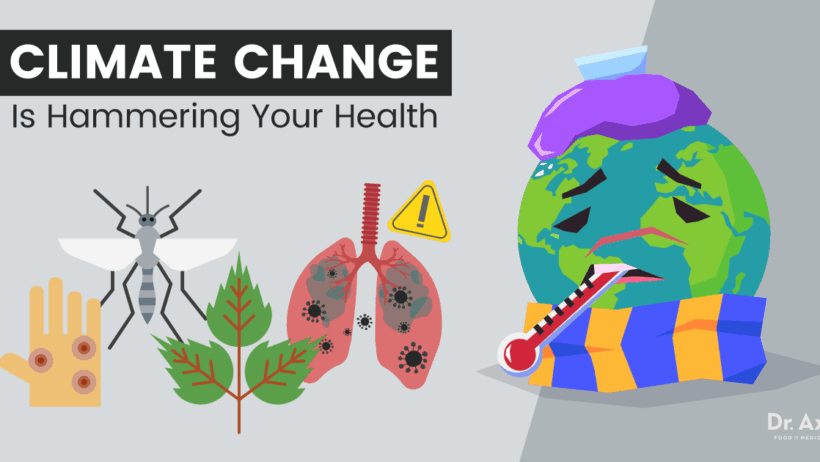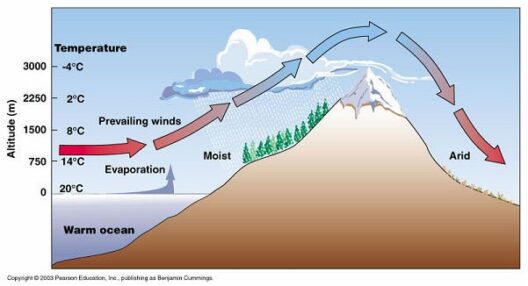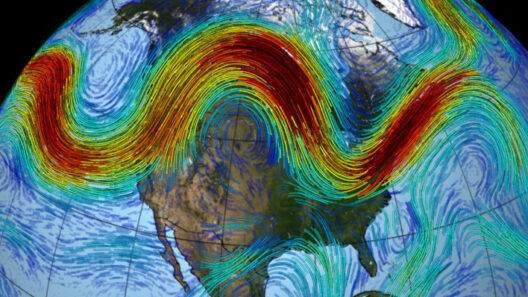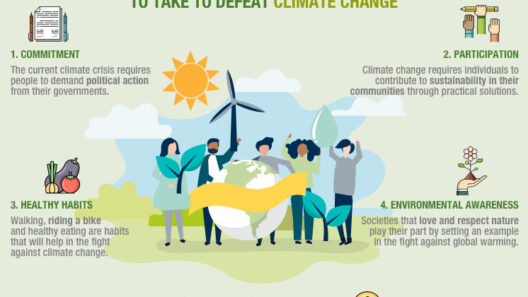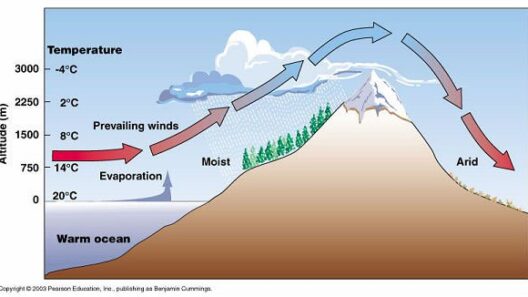Climate change is often viewed through a narrow lens—an alarming weather forecast, melting glaciers, or the plight of endangered species. Yet, hidden beneath the surface of these visible phenomena lies a vast tapestry of health implications that can remain unnoticed until they manifest in alarming ways. Understanding how climate change intertwines with human health requires a nuanced perspective, as impactful as a ripple in a pond that radiates outward, affecting everything in its radius.
At its core, climate change represents a transformation of our environment that can elicit a multitude of health-related repercussions. As global temperatures rise, the very fabric of our existence becomes altered. The air we breathe, the water we drink, and the food we consume are all subject to this evolutionary pressure. The following sections will delve into how seemingly innocuous environmental changes can envelop our well-being, intertwining public health with atmospheric phenomena.
Air Quality and Respiratory Health
Consider the air we inhale—a facilitator of life, yet a silent adversary when tainted. As temperatures ascend, so too does the prevalence of ground-level ozone, a pungent pollutant that exacerbates respiratory ailments. This compound, a byproduct of industrial emissions, becomes more potent with increasing heat. Individuals suffering from asthma or chronic pulmonary conditions may find their symptoms exacerbated, as the climate shift exacerbates the prevalence of allergens like pollen. Hence, climate change breathes life into a cycle of respiratory distress that can affect people even if they are unaware of the intricate environmental chains leading to their discomfort.
Vector-Borne Diseases
The fluctuating climate creates a fertile breeding ground for a plethora of disease-carrying organisms. As regions become warmer and more humid, vectors like mosquitoes and ticks embark on an expansionist agenda, spreading into previously temperate zones. The emergence of diseases such as Lyme disease and West Nile virus is intricately linked to this perilous shift. As these vectors encroach upon new territories, individuals may find themselves at the mercy of infections that thrived far from their homes just a decade prior. What this encapsulates is the sobering reality that climate change acts as a change agent, recalibrating the boundaries of disease and health.
Water Scarcity and Related Health Risks
Water, the quintessential elixir of life, falters under the strain of climate fluctuations. With the increase in extreme weather events, such as droughts and heavy precipitation, the availability of clean water is compromised. When freshwater sources dwindle, communities face dire consequences, from dehydration to the spread of waterborne illnesses. The World Health Organization underscores that access to clean and sufficient water is a crucial component of human health. Therefore, climate change threatens not just the quantity but the quality of our most vital resource, shrouding populations in a precarious balance that undermines their well-being.
Food Systems and Nutritional Quality
The fundamental relationship between climate and agriculture is symbiotic yet fragile. Altered precipitation patterns and shifting growing seasons can lead to diminished crop yields. The repercussions are profound, causing fuel shortages for nutrient-rich foods and elevating food insecurity. Furthermore, rising CO2 levels can impact the nutritional quality of staple crops, diminishing levels of vital nutrients like protein, iron, and zinc. As food becomes a diluted version of its former self, populations that heavily rely on these staples may find their health sliding into a state of malnourishment—an insidious consequence exacerbated by climatic conditions.
Climate Change and Mental Health
The impacts of climate change extend into the realm of mental health, a critical yet often overlooked dimension of wellness. Extreme weather events can incite trauma and anxiety, while longer-term shifts may evoke feelings of helplessness and despair about the future. Studies indicate that communities grappling with climate-related disruptions like hurricanes or wildfires experience elevated levels of post-traumatic stress disorder (PTSD). The uncertainty wrought by climate change can cast a long shadow over mental well-being, intertwining it with physical health in a comprehensive narrative that is deeply alarming.
Social Determinants of Health
Moreover, climate change exacerbates existing social inequalities, which are fundamental determinants of health. Vulnerable populations—those living in poverty, elderly individuals, or marginalized communities—clamor for resources that are increasingly scarce. As climate-induced adversities unfold, those who are least equipped to adapt find themselves ensnared by a cycle of compromised health outcomes. This nexus between environmental factors and social equity reveals that climate change is not merely an ecological concern; it is a public health emergency that demands multifaceted interventions.
Conclusion: The Invisible Web of Health
In conclusion, climate change begets a far-reaching web of health implications that often lurk out of sight, waiting to unfurl with profound consequences. The challenges it presents—ranging from respiratory complications to mental health crises—underscore its insidious and pervasive nature. It is not merely an environmental issue; it permeates the core of human existence, challenging our health, our communities, and our future. Recognizing this interconnectedness is imperative as societies strive to mitigate the impacts of climate change, for only then can we begin to forge a more resilient path forward.



